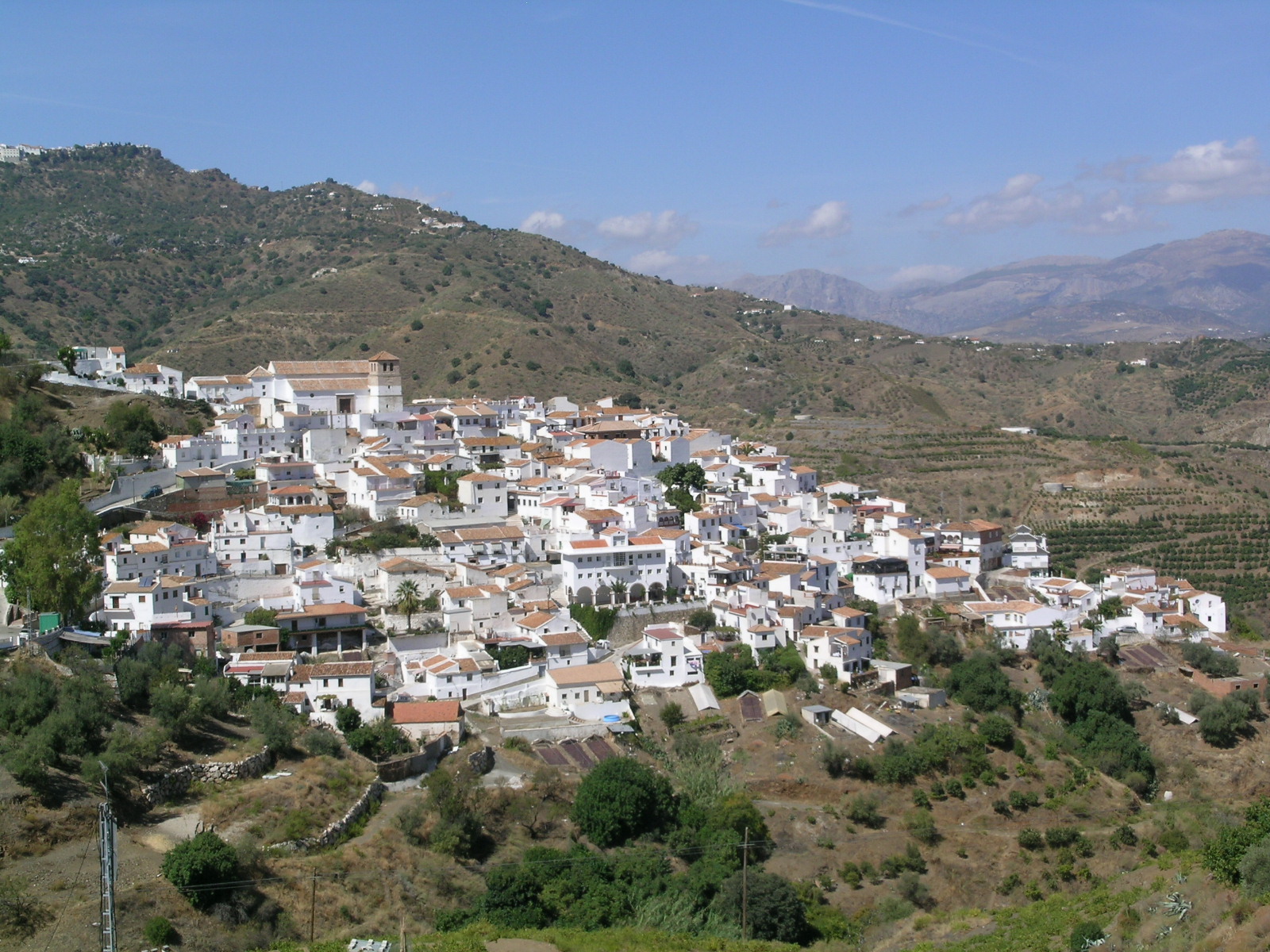
Cútar is a small village perched on the side of a hill, situated on the road from Benamargosa to El Borge, which are its closest neighbours, and a 30 min drive to Vélez-Málaga. It is part of the Route of the Raisin and the village is known as the Fountain of Paradise (Fuente del Paraiso) from the Arab word kautzar because of the twelve springs within the town.
The village is surrounded by vine covered hills and as you drive the 6 km up the winding road from Benamargosa it remains hidden in the folds of the mountains until you round the last bend at km 5 where all you can see is the village of Comares towering up into the sky, then suddenly the white oasis of Cútar appears, a mountainous Atlantis majestically rising from the depths below. A joy to behold, this jewel of a town sparkles in the sunlight as you drive down into the entrance to the village where the first sight is the beautifully restored fountain, the Aina Alcaharia which used to be an Arab chapel before converting to a water well and fountain, the only surviving Arab fountain of its kind in Málaga province. There are steep steps behind it that lead up to the ancient bridge that crosses a little gorge.
Cútar is proud of its Moorish roots and goes back in time to the 15th century to celebrate the Monfí Festival where you can experience the smells, tastes and music of that era. Each October during the second weekend, the narrow streets and main car park become a traditional souk where food, drink, clothes, and other items can be purchased from sales people dressed in traditional Arab costume. There are belly dancers, falconry displays and street entertainment, an Arab tent selling mint tea and culinary delights. Homes are opened as museums showing many items of the past, traditional methods of weaving, paintings and pictures, old photographs of the village in bygone days.
There is a Moorish arch known as the Algorfa with a house situated above it. At the top western side of Cútar sits the 16th century Church of Nuestra Señora de la Encarnación dominating the village with its beautiful baroque side chapel. It was originally known as Our Lady of the Angels and was built over an Arab mosque. If you haven't yet visited Cútar I can highly recommend it as being one of the few remaining virtually untouched, traditional white villages.